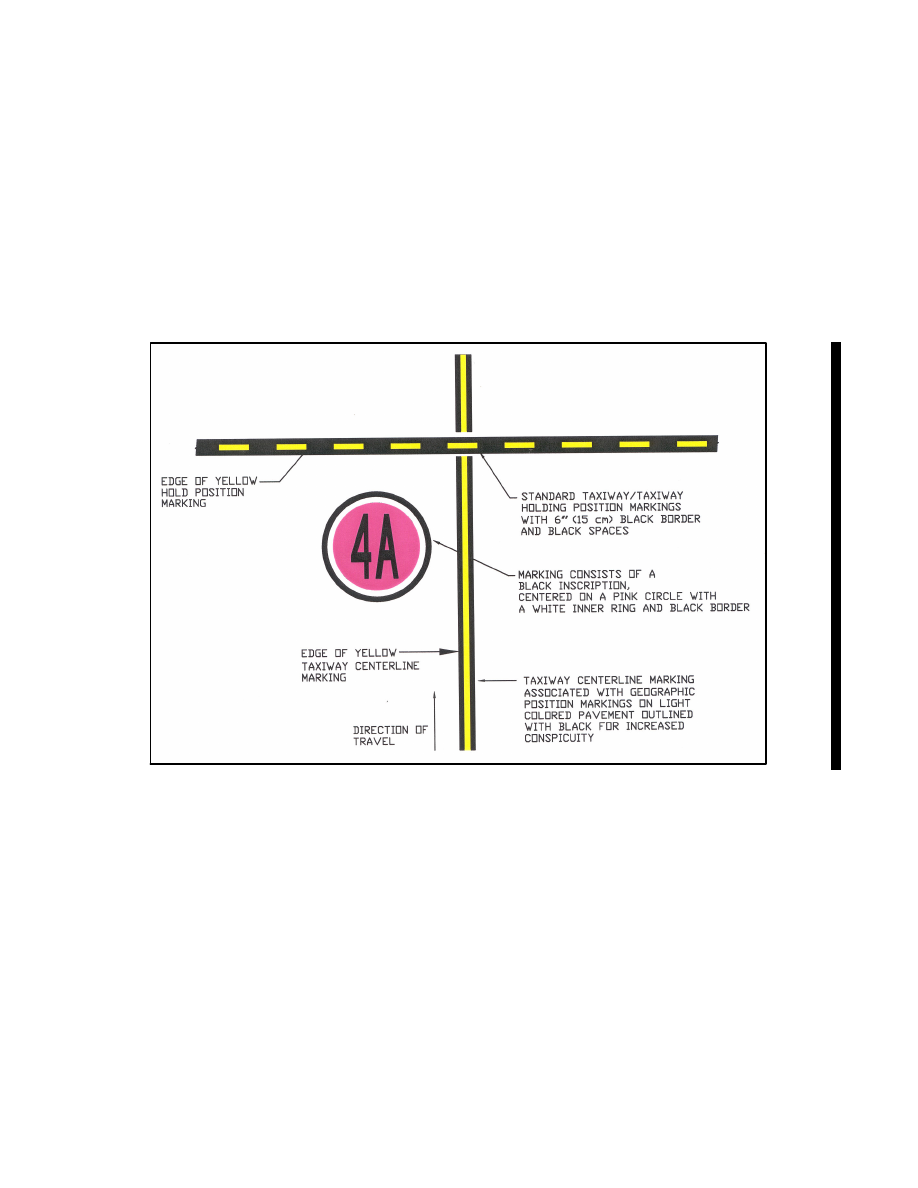
4/20/23
AIM
They are located on taxiways where ATC holds aircraft short of a taxiway intersection. When instructed by ATC,
“
Hold short of Taxiway XX,
” the pilot MUST STOP so that no part of the aircraft extends beyond the holding
position marking. When the marking is not present, the pilot MUST STOP the aircraft at a point which provides
adequate clearance from an aircraft on the intersecting taxiway.
d. Surface Painted Holding Position Signs.
Surface painted holding position signs have a red background
with a white inscription and supplement the signs located at the holding position. This type of marking is
normally used where the width of the holding position on the taxiway is greater than 200 feet (60 m). It is located
to the left side of the taxiway centerline on the holding side and prior to the holding position marking. (See
11.)
FIG 2
−
3
−
12
Geographic Position Markings
Airport Marking Aids and Signs
2
−
3
−
15